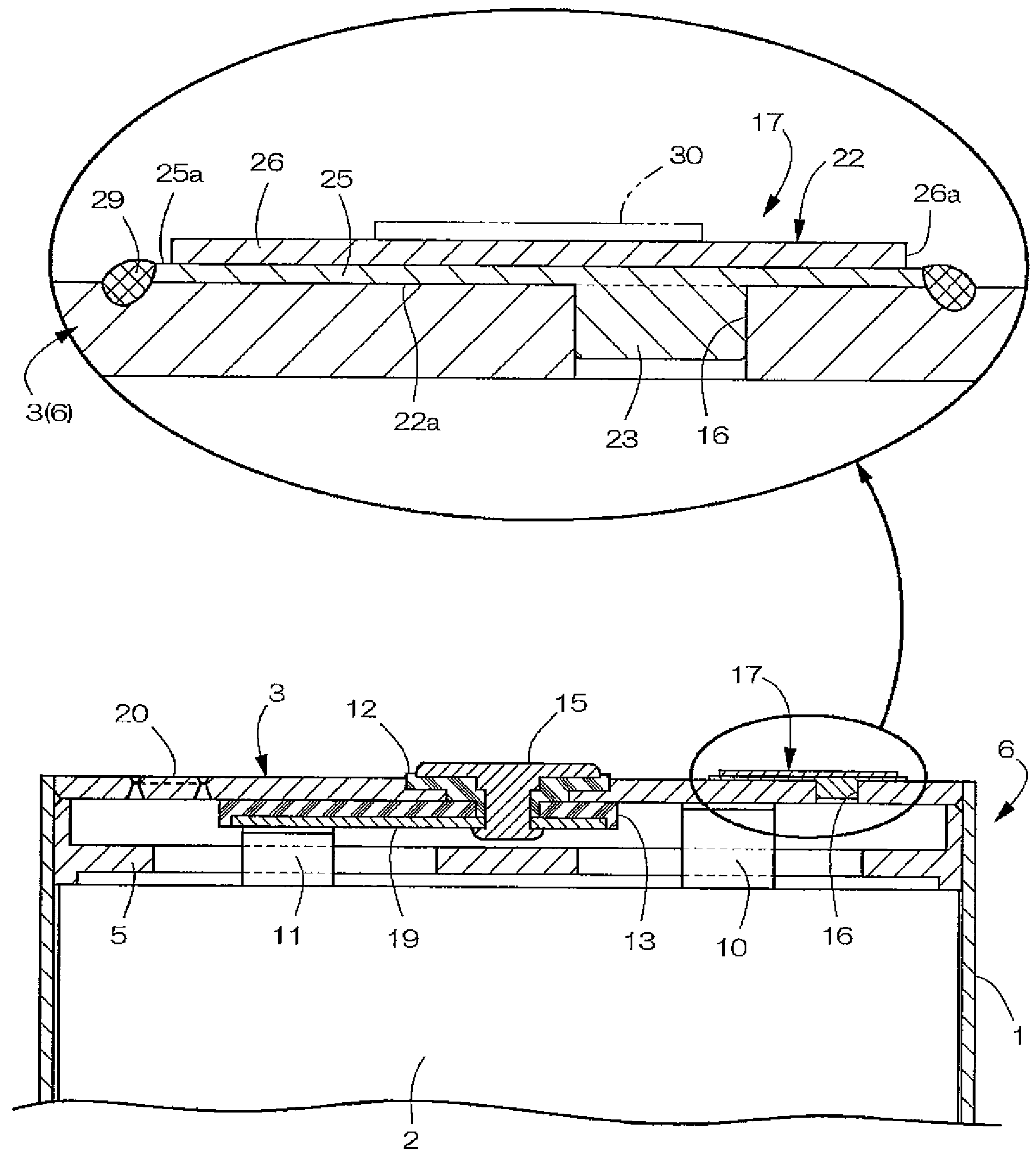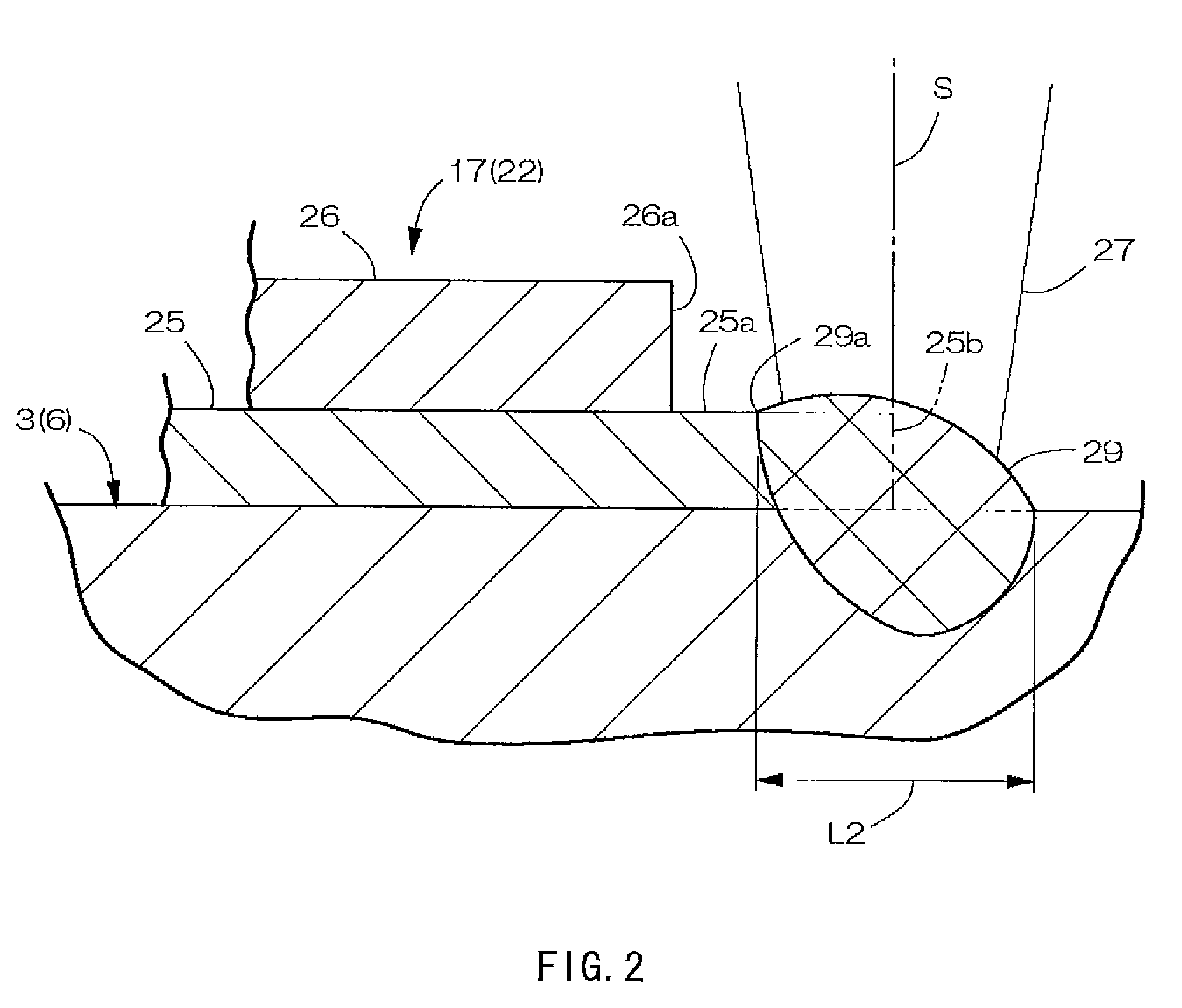Hermetically sealed battery
- Summary
- Abstract
- Description
- Claims
- Application Information
AI Technical Summary
Benefits of technology
Problems solved by technology
Method used
Image
Examples
example 1
[0049]In the batteries according to Example 1, the seal 17 was welded to the lid 3 in a position in which the central axis S of the laser beam 27 was 0.1 mm closer to the nickel layer 26 side than the outer peripheral edge 25b of the aluminum layer 25 in the head section 22 of the seal 17. Thus, the position of the edge 29a of the welding mark 29 on the nickel layer 26 side coincided with the position of the outer peripheral edge 26a of the nickel layer 26.
example 2
[0050]In the batteries according to Example 2, the seal 17 was welded to the lid 3 in a position in which the central axis S of the laser beam 27 coincided with the outer peripheral edge 25b of the aluminum layer 25 in the head section 22 of the seal 17. Thus, the position of the edge 29a of the welding mark 29 on the nickel layer 26 side was 0.1 mm to the outside of the position of the outer peripheral edge 26a of the nickel layer 26.
example 3
[0051]In the batteries according to Example 3, the seal 17 was welded in a position in which the central axis S of the laser beam 27 was 0.2 mm to the outside of the outer peripheral edge 25b of the aluminum layer 25 in the head section 22 of the seal 17. Thus, the position of the edge 29a of the welding mark 29 on the nickel layer 26 side was 0.3 mm to the outside of the outer peripheral edge 26a of the nickel layer 26.
PUM
 Login to View More
Login to View More Abstract
Description
Claims
Application Information
 Login to View More
Login to View More - R&D
- Intellectual Property
- Life Sciences
- Materials
- Tech Scout
- Unparalleled Data Quality
- Higher Quality Content
- 60% Fewer Hallucinations
Browse by: Latest US Patents, China's latest patents, Technical Efficacy Thesaurus, Application Domain, Technology Topic, Popular Technical Reports.
© 2025 PatSnap. All rights reserved.Legal|Privacy policy|Modern Slavery Act Transparency Statement|Sitemap|About US| Contact US: help@patsnap.com



